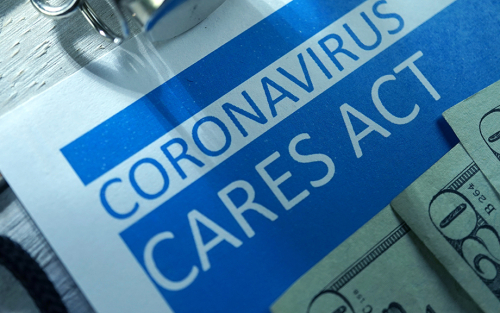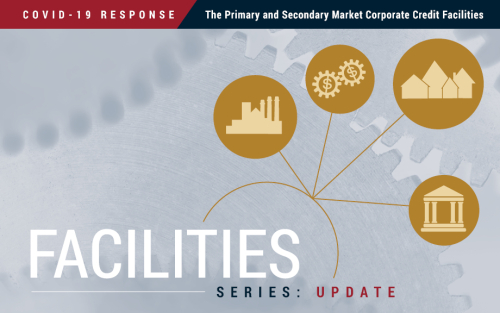How Has COVID‑19 Affected Banking System Vulnerability?
Kristian Blickle, Matteo Crosignani, Fernando Duarte, Thomas Eisenbach, Fulvia Fringuellotti, and Anna Kovner The COVID-19 pandemic has led to significant changes in banks’ balance sheets. To understand how these changes have affected the stability of the U.S. banking system, we provide an update of four analytical models that aim to capture different aspects of banking system […]
Has the Pandemic Reduced U.S. Remittances Going to Latin America?

Workers’ remittances—funds that migrants send to their country of birth—are an important source of income for a number of economies in Latin America, with the bulk of these funds coming from the United States. Have these flows dried up, given the COVID-19 recession and resulting unprecedented job losses? We find that remittances initially faltered but rebounded in the summer months, performing better than during the last U.S. recession despite more severe job losses. Large government income support payments probably explain some of this resilience. Whether remittances continue to hold up is likely to depend on how quickly the U.S. job market recovers, particularly in hard-hit service industries.
How Has China’s Economy Performed under the COVID‑19 Shock?
At the New York Fed: Sixth Annual Conference on the U.S. Treasury Market
On September 29, 2020, the New York Fed hosted the sixth annual Conference on the U.S. Treasury Market. The one-day event, held virtually this year, was co-sponsored by the U.S. Department of the Treasury, the Federal Reserve Board, the U.S. Securities and Exchange Commission (SEC), and the U.S. Commodity Futures Trading Commission (CFTC). The agenda featured a number of panels and speeches on the effects of the COVID-19 pandemic on the Treasury market in March 2020, the ensuing policy response, and ways that market resiliency could be improved in light of the vulnerabilities revealed. Two speeches also touched on the ongoing transition from LIBOR to alternative reference rates.
How Do Consumers Believe the Pandemic Will Affect the Economy and Their Households?

In this post we analyze consumer beliefs about the duration of the economic impact of the pandemic and present new evidence on their expected spending, income, debt delinquency, and employment outcomes, conditional on different scenarios for the future path of the pandemic. We find that between June and August respondents to the New York Fed Survey of Consumer Expectations (SCE) have grown less optimistic about the pandemic’s economic consequences ending in the near future and also about the likelihood of feeling comfortable in crowded places within the next three months. Although labor market expectations of respondents differ considerably across fairly extreme scenarios for the evolution of the COVID pandemic, the difference in other economic outcomes across scenarios appear relatively moderate on average. There is, however, substantial heterogeneity in these economic outcomes and some vulnerable groups (for example, lower income, non-white) appear considerably more exposed to the evolution of the pandemic.
COVID‑19 Has Temporarily Supercharged China’s Export Machine
How Have Households Used Their Stimulus Payments and How Would They Spend the Next?

In this post, we examine how households used economic impact payments, a large component of the CARES Act signed into law on March 27 that directed stimulus payments to many Americans to help offset the economic fallout from the coronavirus pandemic. An important question in evaluating how much this part of the CARES Act stimulated the economy concerns what share of these payments households used for consumption— what economists call the marginal propensity to consume (MPC). There also is interest in learning the extent to which the payments contributed to the sharp increase in the U.S. personal saving rate during the early months of the pandemic. We find in this analysis that as of the end of June 2020, a relatively small share of stimulus payments, 29 percent, was used for consumption, with 36 percent saved and 35 percent used to pay down debt. Reported expected uses for a potential second stimulus payment suggest an even smaller MPC, with households expecting to use more of the funds to pay down their debts. We find similarly small estimated average consumption out of unemployment insurance (UI) payments, but with somewhat larger shares of these funds used to pay down debt.
Are People Overconfident about Avoiding COVID‑19?
More than six months into the COVID-19 outbreak, the number of new cases in the United States remains at an elevated level. One potential reason is a lack of preventative efforts either because people believe that the pandemic will be short-lived or because they underestimate their own chance of infection despite it being a public risk. To understand these possibilities, we elicit people’s perceptions of COVID-19 as a public health concern and a personal concern over the next three months to the following three years within the May administration of the Survey of Consumer Expectations (SCE). This post reports results from these survey questions.
The Banking Industry and COVID‑19: Lifeline or Life Support?
By many measures the U.S. banking industry entered 2020 in a robust state. But the widespread outbreak of the COVID-19 virus and the associated economic disruptions have caused unemployment to skyrocket and many businesses to suspend or significantly reduce operations. In this post, we consider the implications of the pandemic for the stability of the banking sector, including the potential impact of dividend suspensions on bank capital ratios and the use of banks’ regulatory capital buffers.
The Impact of the Corporate Credit Facilities

American companies have raised almost $1 trillion in the U.S. corporate bond market since March. Based on Compustat data, these companies employ more than 16 million people, and have spent more than $280 billion on capital expenditures in the first half of 2020, thereby supporting future economic activity. In this post, we document the contribution of the Primary Market and Secondary Market Corporate Credit Facilities (PMCCF and SMCCF) to bond market functioning, summarizing a detailed evaluation described in a new working paper. Improvements documented in an earlier blog post on the corporate facilities continued after the initial announcement as purchases began, and can be attributed both to the positive effects of Federal Reserve interventions generally as well as the facilities’ direct impact on eligible issuers in particular.












 RSS Feed
RSS Feed Follow Liberty Street Economics
Follow Liberty Street Economics